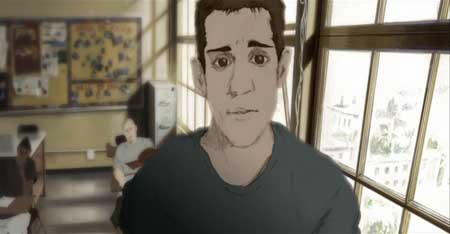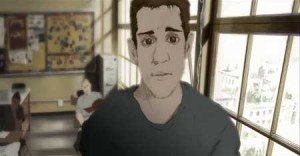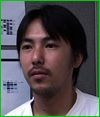
 Archival interview with Hiroshi Murakami from the official Matrix website.
Archival interview with Hiroshi Murakami from the official Matrix website.
MATRIX: How did you get into animation?
MURAKAMI-SAN: About 10 years ago, I saw a public television special on computer graphics. I always liked to draw, and thought computer graphics might be a way to go a step further than drawing. I went to art school for a couple of years to learn computer graphics, which may utilized that tablet for drawing with pen, and after I finished I started working in a commercial production house. One thing I was dissatisfied with at the commercial house was they always wanted pieces that looked very realistic. Given my drawing background, love for Japanese animation, and desire to learn more about the actual work of animation — as opposed to always drawing realistic images — I decided to apply for a job at Studio 4°C [Animation and Production Design studio for: SECOND RENAISSANCE: PARTS 1 & 2, BEYOND, KID’S STORY, A DETECTIVE STORY].
MATRIX: What are some of the projects you’ve worked on at Studio 4°C?
MURAKAMI-SAN: I’ve only been here for about three years, so I’ve missed out on a couple of the big projects they’ve done here. Since I’ve been here I’ve worked on some music projects, and I was computer graphics director on one short film that was part of a project of four short films by four different animation directors. Aside from that, I’ve worked on some commercials and a mixture of other things.
MATRIX: What was the name of the short film?
MURAKAMI-SAN: Grasshopper. It’s out on DVD now [only in Japan, and Takeshi Koike – director of WORLD RECORD – did a couple of pieces for this DVD as well]; you can buy copies all over. They’re interesting films.
MATRIX: At what point in the process did you join the KID’S STORY project?
MURAKAMI-SAN: Once the storyboards were finished, the studio approached me to work with the director, [Shinichiro] Watanabe-san, to figure out how to actually pull off the images that he was envisioning.
MATRIX: Has working on this project been challenging?
MURAKAMI-SAN: Watanabe-san has a very strong vision of what kind of animation he wants to make. In this case, a lot of it had to do with bringing a live action hand held camera feel to cel animated flat images, so we’ve been going for something a little rougher than plain animation. Watanabe-san will describe what kind of images he wants to see, and then I’ll take the hand drawn parts and assemble them in a way that I think meets his request. Then we work together through a couple of rounds of revisions to get a final image.
MATRIX: What is unique about this production?
MURAKAMI-SAN: One thing that’s unique about the animation for KID’S STORY is that unlike most cel animation, where the drawings are cleaned up before they’re scanned and the lines are very sharp and well defined, our direction on this production has been to leave in the all the artists’ sketch marks and not do any clean up. To really go for a rough, freehand style, where the lines are extremely expressive, rather than cleaned up and sharpened. We’re working with one artist, [Shinji] Hashimoto, who has a really strong feeling for that style of imagery. The artwork is what really makes KID’S STORY look unique.
MATRIX: Talk about the process of working with the key animator?
MURAKAMI-SAN: Actually, the only time I get to talk to Hashimoto-san is if there’s a problem with one of his drawings and I have to ask for some clarification or changes. Watanabe-san and Hashimoto-san work together on Hashimoto’s drawings, so when the drawings end up on my desk, I’ll get together with Watanabe-san to make sure they are consistent with the rest of the work in KID’S STORY.
 MATRIX: How does your average work day go on this production?
MATRIX: How does your average work day go on this production?
MURAKAMI-SAN: On an average day I have a meeting with Watanabe-san and Hashimoto-san to decide how to approach each shot, and then wait for Hashimoto-san to finish the next set of drawings. Once I get the drawings, the first thing I do is scan them in and color the cels using computer software. Then, working with the art director and the background artist, I get the background elements and any photographic reference together, scan those into the computer and combine the colored cels with the background. Then it’s just a matter of balancing all the parts, applying any filters and doing the camerawork. Once I record the final sequences I show them to Watanabe-san, andif there are any changes, I’ll go back through for reshoots.
MATRIX: Has working with an actor as a reference point for the principal character presented any unique challenges?
MURAKAMI-SAN: The other animators have been working a lot with the reference footage, but it hasn’t had an influence on my work. I’m mostly concerned with bringing the best out of the finished drawn artwork.
MATRIX: Do you have a favorite shot in KID’S STORY?
MURAKAMI-SAN: It’s very short, so I like all of it. It’s a lot of fun to work on.
MATRIX: Thank you, Murakami-san.
Interview by REDPILL
Translated by Mike Arias
July 2002

Be the first to comment